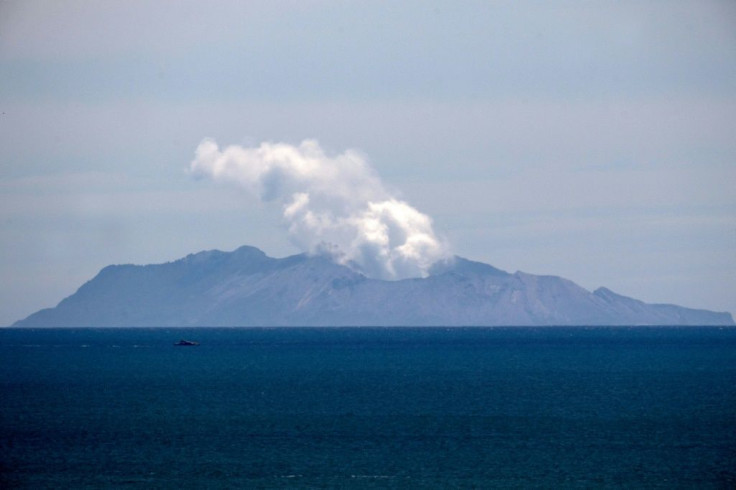Volcano Tourism: Deaths On New Zealand’s White Island Highlight Risks

The deaths of at least eight people at an active volcano on White Island in New Zealand, with at least nine other missing and presumed dead, has raised questions about the risks inherent in volcano tourism.
White Island Tours, a travel company that took some of the victims to the volcano, faces a $988,000 fine and could potentially faces millions more in damages following an investigation launched by New Zealand's health and safety regulator.
White Island Tours will not be facing criminal charges. Moreover, New Zealand laws will prevent victims’ families from filing personal injury lawsuits against the tour operator. Instead, they could receive cash settlements from a government insurance fund.
In addition, Royal Caribbean, the cruise line that sent 24 passengers on the volcano tour, may face lawsuits in the U.S.
Prior to Monday’s eruption, a “level four” alert was issued by local authorities – meaning a “moderate volcanic eruption” was possible at White Island.
Nonetheless, tour operators brought travelers to the volcano.
White Island Tours said on its website it “operates through the varying alert levels but passengers should be aware that there is always a risk of eruptive activity regardless of the alert level. White Island Tours follows a comprehensive safety plan which determines our activities on the island at the various levels.”
Visiting active volcanoes obviously carries a degree of risk, said Mike Burton, professor of volcanology at the University of Manchester in England.
“In volcanic systems which have infrequent eruptions such as White Island, the risk of an explosion occurring during any particular visit is quite low but clearly if there are always visits going on the probability that someone gets involved in an event ... increases,” he added.
Burton noted about 10,000 tourists visit White Island every year.
Amy Donovan, a geographer from the University of Cambridge wrote a Royal Geographical Society paper about the risks of volcano tourism, in which she warned that tourists who don’t realize the danger of eruptions place local emergency services at risk if they need rescue.
"Many active volcanic countries face the dilemma of wanting tourists, but also wanting to keep people safe, which creates a difficult conundrum,” she added.
The popularity of volcano tourism likely started in 2010 with the enormous eruption of Eyjafjallajökull in Iceland, which halted air traffic across northern Europe. The publicity over the eruption kick-started a tourist boom for the remote north Atlantic island.
Iceland, reeling from a financial crisis of 2008, eventually discovered that the volcano eruption – witnessed by hundreds of millions around the world on TV and internet screens – became a tourist attraction. By 2017, the total number of tourists outnumbered the island’s entire population 7-to-1.
Between 2010 and 2017, the number of tourists visiting Iceland mushroomed from 500,000 to about 2.2 million annually.
And with that sharp increase in tourism, much of it driven by fascination with volcanoes, came problems.
“In Iceland, we are witnessing an increase in road accidents even out of season, with tourists ill-prepared for the challenging driving conditions,” Donovan said. “This research highlights the careful balance that needs to be found between the positive impacts of tourism and ensuring that visitors are responsible, not putting themselves, or others, at risk.”
In some other cases, volcanic eruptions have hurt tourism.
In May 2018, after a huge eruption of the Kilauea volcano in Hawaii, the state lost millions of dollars in tourism revenue through cancellations.
Similarly, in late 2017, after the volcano Mount Agung erupted on the island of Bali, tourism to Indonesia suffered with thousands of canceled hotel bookings. Bali’s airport even closed for several days, stranding tens of thousands of travelers.
“It’s like after the 2002 Bali bombing,” said Bulan Bharata, public relations manager of the Grand Hyatt Bali. “But back then the recovery was fast.”
Due to a sharp drop in tourists to Bali in the first few weeks after the eruption, Tourism Minister Arief Yahya said Indonesia lost nearly $18 million a day in revenue.
As for New Zealand, tourism remains a key part of its economy.
Stats NZ, New Zealand's official data agency, reported spending by international and domestic tourists reach 40.9 billion New Zealand dollars ($27 billion) for the year ended March 2019, up 4% from the prior year. The number of short-term arrivals to New Zealand rose by 1.3% over that period.
On the whole, international tourism expenditures contributed 20.4% to New Zealand's total exports of goods and services. Tourism generated a direct contribution to gross domestic product of 16.2 billion New Zealand dollars ($10.7 billion), or 5.8% of gross domestic product.
In addition, Stats NZ said 229,566 people (or 8.4% of the total workforce) were directly employed in tourism, a 3.9% jump from the previous year.
However, the growth in tourist arrivals in New Zealand has been slowing, with a sharp drop in the number of Asian visitors.
Stats NZ said the total number of foreign tourists rose 2.1% to 3.9 million for the year ended October 2019, over the prior year-long period ended October 2018 – marking the lowest such annual growth since 2012.
"Visitor arrivals from Asia have been falling for the last nine months when compared with the same months last year," said Tehseen Islam, Stats NZ's population indicators manager.
© Copyright IBTimes 2024. All rights reserved.





















